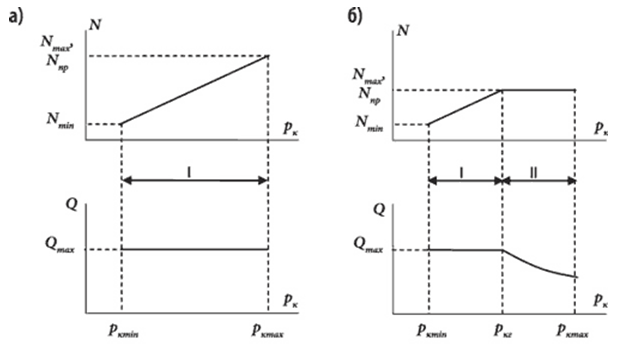Abstract
Contents
Introduction
Working face is the main process of the coal company. From its smooth operation depends on the economic performance of the mine and the work of all downstream equipment.
Extraction of coal by means of combines, boats, and jetting. Delivery of coal by means of culling the scraper conveyor. Maintaining production by means of powered roof supports.
Automating the mining industry to replace the function of a person to manage, regulate and control the production process by means of special devices.
Automatic current device works more reliably eliminates human error and, more importantly, reducing the number of employees who are directly involved in production, ensure the growth of labor productivity, and freed the labor force used on another job. Operating bottom-hole machines, systems and components associated with considerable difficulties due to mining-technological conditions, dust and gas regime of the mine, its microclimate and second factors.
1. Topicality
At the present time of combine recess provided 65–70 percent of coal production. Vary widely and the occurrence of physical and mechanical properties of the coal seam thickness, mounting and transport conditions, the presence of various disorders, especially technologies of work, especially in high lava almost continuously alter the rebench of the combine. Moreover, it is necessary to simultaneously perform multiple operations, such as controlling the speed of delivery and separation of the cutter bodies. In addition, the area of coal mining is one of the most dangerous participant – cove lava. Therefore, the problem of automation of downhole equipment is paid much attention. Modern mining machines are not equipped with a device for continuous adjustment of the cutting speed, so the regulation of the engine is done by automatic controllers, supporting a given load of engines by changing only the flow rate [1]. Numerous research and development on the creation of sensors open borders "rock-coal" with these characteristics.
2. Purpose and objectives of the master's work
The aim is to improve the life of electromechanical equipment through the creation of automated control of the border combine rock-coal.
To create this system, you must solve several problems, namely:

Figure 1 – Dependence of cutting power and the theoretical performance of the combine on the contact strength of the destroyed rocks in the absence of regulation (a) and smooth (b) load management [2]
In practice, the actual speed of movement is determined by the following factors: the speed of the pipeline valves, air speed, the parameters of support [3].
Existing control systems do not allow simultaneous control of speeds and feeds.
It has already been attempts to create such systems, whose work was based on the values obtained by different sensors rock-coal. However, the use of radioisotope detector is not safe for staff, and the load cell which is fixed directly to the executive body, has low durability. Of the above proposals imply the need for a control system, built on the following principles:
However, the problem of defining and controlling the border, "rock-coal" can be solved by a device block diagram is shown in figure 2.

Figure 2 – Block diagram of the control limits "rock-сoal"
The device controls the border, "rock-coal" is set at a distance from the work of the executive body of the mining machine, which increases the operational reliability and lifespan of the sensor. Turning the transmitter on the differential transformer scheme can improve the accuracy of controlled borders, ensures the reliability of information [4]. Operation control of the border, "rock-coal" is as follows. The impact force F solid coal (rock) on the surface of the blade body is converted into axial displacement L of the mechanical sensing element, resulting in a change in the position of the core differential transformer transducer, whose output signal is formed by U, the corresponding effects of coal or rock mass. To bring the output signal U of the standard value used Ust normalizing converter.
Block diagram of autopilot harvester is shown in figure 3.

Figure 3 – Block diagram of the automated control system combine
In figure 3, the following notation: UE – a device converting the voltage to the change effort; FF – matching unit; MC – microcontroller, NC – control unit feed rate, PS – power supply unit, CID – cutting speed control device.
This control system is built on the new device, which has not been used. The use of this device enables the system to respond quickly to changes in the fortress on the border of the array rock-coal, rapidly changing speeds and feeds.
Conclusion
Use of automated control system combine to hypsometry reservoir created by the device load balancing, will significantly increase the life as a shearer (the absence of strong loadings on the engine), and most executive compensation due to a sharp change in the transition efforts of the breed combines higher fortress.
Notice. At the time of writing this essay master's work is not yet complete. The final completion – December 2012. Full text of the work and materials on the subject may be obtained from the author or his head after that date.
References
- Ямщиков В.С. Контроль процессов горного производства: Учебник для вузов. / В.С. Ямщиков – М.: Недра, 1989, 446 с.
- Электронная библиотека [Электронный ресурс]. – Режим доступа: http://library.stroit.ru.
- Солод В.И., Гетопанов В.Н., Рачек В.М. Проектирование и конструирование горных машин и комплексов. Учебник для вузов. / В.И. Солод, В.Н. Гетопанов, В.М. Рачек – М., Недра, 1982, 350 с.
- Шидлович Л.Х. Дифференциальные трансформаторы и их применение. / Л.Х. Шидлович – Энергия, 1966, 96 с.
